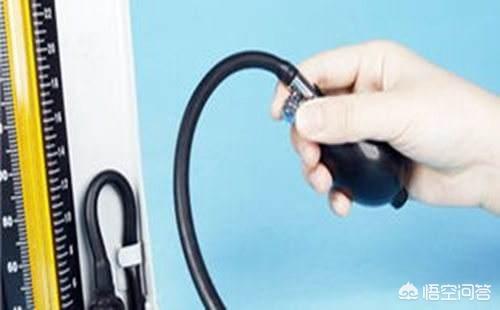What exactly do people with high blood pressure take for their medication?
In clinical practice, many hypertensive patientsAfter many years of taking medication still don't know what commonly used antihypertensive drugs are and the factors that affect blood pressure.
If they can be mindful of these simple medical facts, I believe their blood pressure will be more consistently controlled.
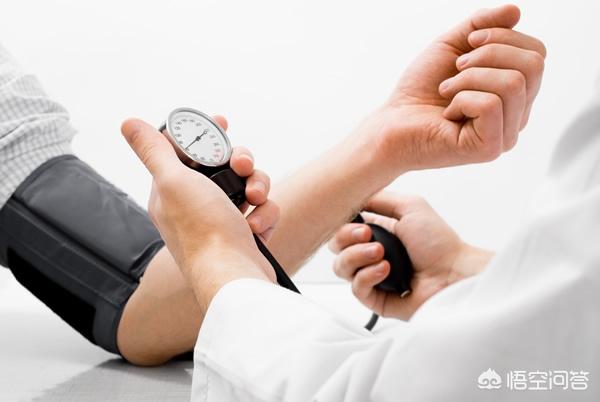
Commonly used antihypertensive drugs:
1. Diuretics
For patients without complications without hypertension complicationsThe drug of choice is primarily indicated forMild to moderate hypertensionThe Particularly applicableHypertension in the elderly includes simple systolic hypertension in the elderly, obesity. Commonly used: indapamide tablets, hydrochlorothiazide.
2. Beta-blockers
It is mainly applicable to mild to moderate hypertension.Especially in young and middle-aged patients with a heart rate greater than 80 beats. Commonly used: metoprolol.
3. Calcium channel blockers (CCBs)
Especially hypertension in the elderly,Patients with coronary heart disease, angina pectoris. Commonly used: nifedipine controlled release tablets.
4. Angiotensin-converting enzyme inhibitors (ACEI)
It can be used to treat mild to moderate or severe hypertension and its indicated for ventricular hypertrophy,Diabetes mellitus with microproteinuria, renal damage with proteinuria, etc.. Commonly used: captopril.
5. Angiotensin receptor antagonists (ARBs)
Applicable to the same group as ACEI drugs. Commonly used: candesartan, valsartan.
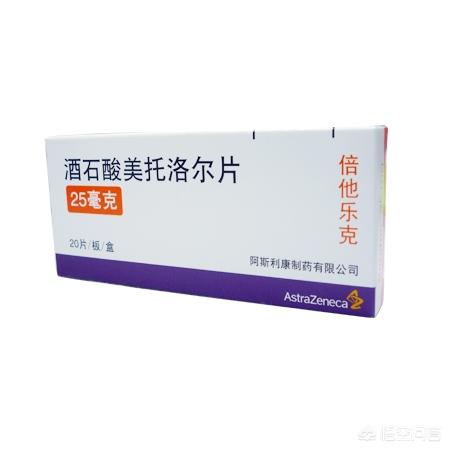
Pairing of antihypertensive drugs:
1. Diuretics + ACEIs
2. CCB类+ACEI类
Caveats:
1. Apply long-acting antihypertensive drugs;Apply from small doses;
2. If the blood pressure exceeds 160/1 00ramHg.A combination of both drugs is required.
3. Don't drop your blood pressure too fast.It is possible to gradually reduce the blood pressure to normal within 2-3 weeks. If the blood pressure is very high and there are symptoms of headache and dizziness. It is necessary to lower the blood pressure to below 1 50/90mmHg as soon as possible.。
Factors affecting blood pressure:
1.state of mindThe relationship with high blood pressure is very close. Always in an atmosphere of anxiety and tension, blood pressure is difficult to control.
2.Diets high in salt, cholesterol, and sugar, smoking, drinking, and inactivity are all contributors to elevated blood pressure.
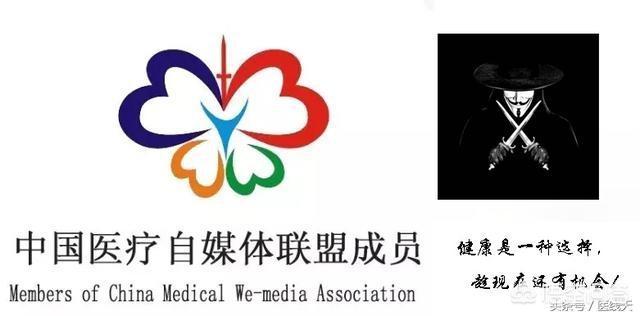
If you have any questions, you can leave them in the comments and I will answer them as soon as I can!
The choice of medication for hypertensive patients is up to the patient!
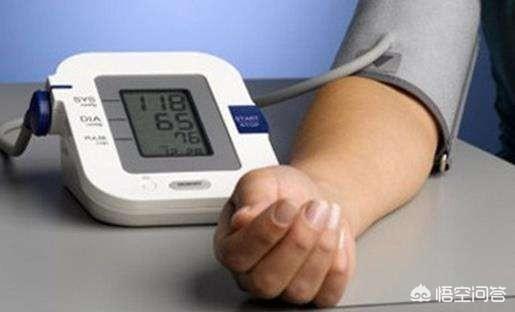
Currently in clinical practice, the first-line antihypertensive drugs for hypertensive patientsThere are 5 categories: diuretics, beta-blockers, calcium antagonists, angiotensin-converting enzyme inhibitors (ACEI), and angiotensin II receptor antagonists (ARB). In recent years, large-scale meta-analyses have shown that "there is no significant difference in the overall antihypertensive effect of the five commonly used antihypertensive drugs, and that the cardiovascular protective effect of any antihypertensive therapy is mainly derived from the lowering of blood pressure itself.
All 5 major classes of antihypertensive drugs can be used for initiation and maintenance therapy in hypertensive patients. Of course each drug has its own clinical indications and contraindications, and different classes of antihypertensive drugs may have relative advantages in certain areas:
Stroke prevention-ARBs are preferred to beta blockers, and calcium antagonists are preferred to diuretics;
Prevention of heart failure--Diuretics are superior to other classes;
Delaying renal insufficiency in diabetic and nondiabetic nephropathy-ACEI or ARB is superior to other classes;
Improvement of left ventricular hypertrophy-ARBs are superior to beta-blockers;
Delay carotid atherosclerosis--Calcium antagonists are superior to diuretics or beta-blockers.
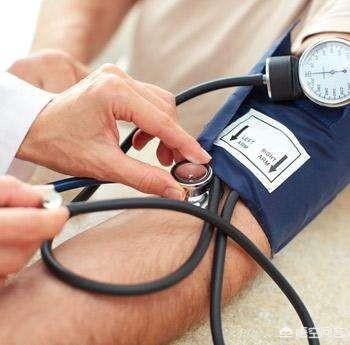
Recommendations for the selection of various antihypertensive drugs!
1, Diuretics
Suitable for heart failure, geriatric patients, systolic hypertension, not suitable for gout patients (high uric acid), if diabetes mellitus, hyperlipidemia, sexually active young men, pregnant patients, need to pay special attention to weigh the pros and cons!
2, Beta-blockers
Suitable for patients with angina pectoris, post myocardial infarction, tachyarrhythmia, pregnancy, not suitable for patients with asthma and COPD, peripheral vascular wall, heart block, if they are hypertriacylglycerolemia, insulin-dependent diabetes mellitus, athletes, and manual laborers need to pay special attention to weigh the pros and cons!
3, ACEI/ARB
Suitable for patients with heart failure, left ventricular hypertrophy, post myocardial infarction, diabetes mellitus with microproteinuria, not suitable for pregnancy and patients with bilateral renal artery stenosis.
4, Calcium antagonists
Suitable for patients with angina pectoris, peripheral vascular disease, systolic hypertension, reduced glucose tolerance, not suitable for patients in pregnancy, and in the case of patients with congestive heart failure need special attention to weigh the pros and cons!
5, Alpha-blockers
It is suitable for patients with prostate hypertrophy, low glucose tolerance, and in the case of upright hypotension requires special attention to weigh the pros and cons!
We know that the pressure on the walls of the blood vessels caused by the flow of blood in the blood vessels is called blood pressure. When the heart contracts, a large amount of blood is ingested into the arteries by the left ventricle, and this is the resulting pressure is called systolic pressure, which is also called high pressure; and when the heart is in diastole, the arteries contract to ensure that the blood continues to flow through the blood vessels, and at this time, the pressure is called diastolic pressure, which is also referred to as low pressure. The ideal blood pressure is less than 120/80 mmHg. We should know that both hypertensive patients and healthy people have circadian rhythmic changes in blood pressure, generally lower blood pressure at night, while in the morning after waking up, the blood pressure will slowly rise, and some people will have a peak blood pressure in both the morning and afternoon. to diagnose hypertension, it is necessary to measure the blood pressure in the upper arm three times on a non-simultaneous day, and if systolic blood pressure ≥ If the systolic blood pressure is ≥ 140 mmHg or diastolic blood pressure is ≥ 90 mmHg, hypertension is considered. It should also be noted that there may be a mild difference in blood pressure between the two upper extremities, but if the difference is large, the higher value should be taken.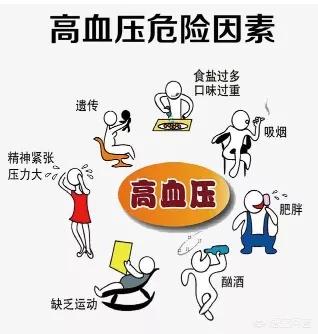
We know that blood pressure level has a causal relationship with the occurrence of cardiovascular and cerebrovascular diseases. It has been found that there is a close causal relationship between hypertension and the occurrence of cardiovascular and cerebrovascular events such as stroke, coronary heart disease, heart failure, and atrial fibrillation, etc. The ratio of stroke/myocardial infarction in our country is much higher than that of the western hypertensive populations, and stroke is the most dominant cardiovascular risk for the hypertensive population in China. Therefore, after the diagnosis of hypertension, blood pressure control should be carried out effectively for a long period of time, and lifestyle adjustment and the application of antihypertensive drugs are important guarantees for hypertension to reach the standard, and the following principles should be adhered to with regard to antihypertensive drugs:1 Small-dose starting treatment, small-dose drugs should be given at the beginning, and the drugs should be adjusted gradually according to the blood pressure, so as to guarantee the safety and tolerance of the medication.2 Try to use the therapeutic drugs with a long half-life period, and use the medication once a day. Long-acting drugs that can be taken once a day can effectively control blood pressure throughout the day and prevent cardiovascular and cerebrovascular diseases.3 Combined use of drugs, in the case of low-dose treatment of a drug but the blood pressure does not reach the standard, it is recommended to combine with an antihypertensive drug with a different mechanism of action, so as to enhance the efficacy of blood pressure lowering, but also to reduce the adverse reactions caused by the increase in the dose of the drug.4 Individualization of the use of medication, the selection of antihypertensive drugs can be based on the patient's specific situation and tolerance, affordability and so on. tolerance, affordability and other comprehensive choice.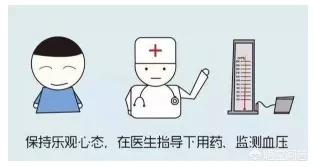
At present, the commonly used drugs to lower blood pressure in clinical practice include five categories, such as diuretics: commonly used hydrochlorothiazide, indapamide, spironolactone, etc.; calcium channel blockers: commonly used drugs are nifedipine, amlodipine, levamlodipine, lasidipine, felodipine, etc.; angiotensin-converting enzyme inhibitors (ACEIs): commonly used are captopril, enalapril, benazepril, fosinopril, remipril, etc.; beta-blocker antagonists (ARBs): valsartan, cloxartan, irbesartan, temsiartan, candesartan, etc.; beta-blockers: valdecartan, cloxartan, tesmisartan, candesartan, etc. Angiotensin II receptor antagonist (ARB): valsartan, cloxartan, irbesartan, timosartan, candesartan, etc.; β-blockers: metoprolol, bisoprolol, atenolol, etc.
For different patient populations, the choice of drugs for lowering blood pressure should be individualized, for example, in the elderly population, calcium channel blockers, ACEIs or ARBs may be preferred, etc. There is no clear recommendation for treatment of elderly patients if they simply have elevated systolic blood pressure while diastolic blood pressure is not high or even low, and it is recommended that if diastolic blood pressure is less than 60 mmHg while systolic blood pressure is not higher than 150 mmHg it is advisable to observe and may be treated without drugs, while when the systolic blood pressure is higher than 150 and less than 179mmHg, small doses of antihypertensive drugs can be given cautiously, if the systolic blood pressure is higher than 180mmHg, although the diastolic blood pressure is low, it is recommended to give the above antihypertensive drug treatment. For diabetic patients, it is recommended that ACEIs and Prilosec are preferred for treatment, and if these drugs are not tolerated, ARBs (sartans) can be given, which can lower urinary albumin and have a protective effect on renal function. For children and adolescents with hypertension, ACEIs or ARBs, and calcium channel blockers have a low incidence of adverse effects at standard doses, and can be used as the preferred therapeutic agents in pediatrics. Intravenous antihypertensive drugs labetalol and magnesium sulfate are available for hypertension in pregnancy, and oral drugs include β-blockers, amiloride, and calcium channel blockers, etc. ACEIs and ARBs are contraindicated during pregnancy because of the teratogenic effects of these drugs on the fetus. Therefore, there are many types of antihypertensive drugs, and the rational selection of therapeutic drugs should be combined with one's own situation such as age, comorbidities, tolerance, therapeutic efficacy, affordability and other comprehensive choices.
In addition, once hypertensive patients choose suitable antihypertensive drugs for themselves, they must take the antihypertensive drugs on time, do not arbitrarily reduce the amount or stop taking the drugs to prevent the blood pressure from rebounding, and at the same time, they should have a balanced diet, limit the intake of fats, consume more food rich in potassium and calcium, and limit the intake of salt: it should be reduced to less than 6g per day, and then they should have a moderate exercise to avoid emotional excitement and excessive tension and anxiety.
References:
Chinese Guidelines for the Prevention and Treatment of Hypertension (2018)
Chinese Guidelines for Hypertension Patient Education (2013)
"Happy little doctor" answers your questions.
Principles of drug therapy for hypertension
1. Control the blood pressure to an appropriate level to eliminate all the discomforts caused by high blood pressure and to ensure the quality of life of the patients.
2. Minimize the damage caused by high blood pressure to the heart, brain, kidneys and other vital organs, and strive to gradually reverse the damage that has already developed.
3, in the antihypertensive treatment at the same time, to prevent and control other risk factors for cardiovascular and cerebrovascular complications, such as left ventricular hypertrophy, hyperlipidemia, diabetes mellitus, hyperinsulinemia, insulin resistance and obesity.
4. Programs should be as simple as possible and be able to be sustained over time.
5. Adhere to individualization and make plans for each patient's specific situation.
6. Promote early treatment of illnesses and early prevention of illnesses, emphasizing the need for close cooperation between patients, hospitals and families.
7. Start at a low dose, and if blood pressure fails to meet control goals, the dose of the drug should be increased based on the administration of the drug.
8. If the first drug is ineffective, a rational combination of drugs should be administered, usually with a small dose of a second antihypertensive drug rather than increasing the dose of the first drug. Effective five types of combination drug combinations are: diuretics + β-blockers; diuretics + ACE inhibitors (or angiotensin II receptor antagonists); calcium antagonists + β-blockers; calcium antagonists + ACE inhibitors; α-blockers + β -receptor blockers.
9. If the first drug is very ineffective or intolerable, another type of antihypertensive drug can be used instead of increasing the dose of the first drug or adding a second drug.
What are the common types of antihypertensive medications?
1. Calcium ion antagonist (CCB), is also the most commonly used class of antihypertensive drugs for hypertensive patients in China. That is, the name of the drug with the word "diphenhydramine", such as amlodipine, nifedipine controlled-release tablets and so on;
2. Angiotensin-converting enzyme inhibitors (ACEIs), i.e., those with the word "prilosec" at the end of the drug name, such as captopril, fosinopril, perindopril, etc;
3, angiotensin II receptor antagonist (ARB), that is, after the name of the drug with the word "sartan", such as Irbesartan, valsartan, candesartan and so on;
4. Diuretics: e.g. dihydrochlorothiazide tablets, hydrochlorothiazide, indapamide, etc.. These drugs are less expensive;
5, beta-blockers, that is, the name of the drug with the word "Lol", this type of antihypertensive drugs in the lowering of blood pressure at the same time can achieve the effect of slowing down the heart rate, such as metoprolol, bisoprolol and so on.
6, single tablet compound preparation, different mechanisms of action of antihypertensive drugs, to achieve synergistic effect and reduce adverse effects, reduce the number of times to increase drug compliance, such as Irbesartan hydrochlorothiazide, valsartan amlodipine, etc..
Follow "Happy Little Doctor" to learn more about health!
Hello, everyone! I'm Dr. Yang. I've come to talk to you about this.
In reality, the vast majority of hypertensive patients must be based on a healthy lifestyle plus antihypertensive drugs in order to control our blood pressure up to standard. However, there are dozens of antihypertensive drugs on the market, some say this drug is good, some say that drug is good, listening to our hypertensive patients in the clouds, do not know how to choose drugs.
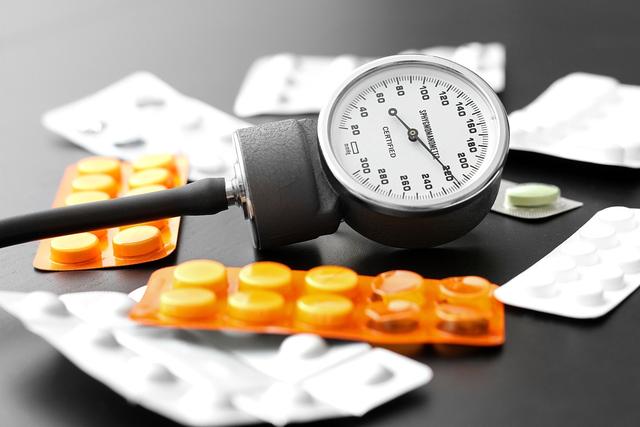
In fact, the most commonly used antihypertensive medications can be divided into five major categories
Category I:ACEI class is Pulse, such as Benadryl, Captopril, Enalapril, Fosinopril, etc., as long as the word "Puli" belongs to this class of drugs;
Category II:ARB class that is, sartan class, such as chlorosartan, valsartan, irbesartan, etc., as long as with the word "sartan" are belong to this class of drugs;
Category Three:Beta-blockers, i.e., Lolars, such as metoprolol, bisoprolol, and arnolol, all belong to this group as long as they have the word "Lol" in them;
Category Four:Calcium antagonists, i.e., diphenhydramine, such as nifedipine, amlodipine, etc., as long as the word "diphenhydramine" belongs to this type of drug;
Category Five:Diuretics, such as hydrochlorothiazide and indapamide.
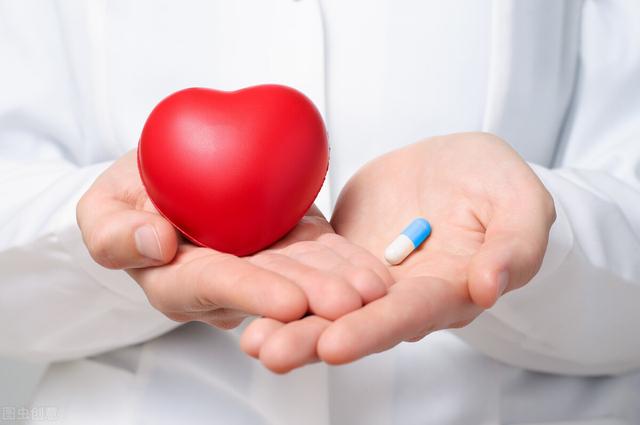
With so many types of antihypertensive drugs, how do we choose?
Before you all choose your antihypertensive medication, please always remember one thing:There is no such thing as the best antihypertensive drug, only the one that suits you best.
Each antihypertensive drug has its own group of people and its own contraindications. Antihypertensive drugs must be individualized and selected in order to be both safe and to lower blood pressure smoothly.
For example, in addition to lowering blood pressure, Prilosec antihypertensive drugs can also reduce proteinuria and improve myocardial remodeling, which is suitable for hypertension combined with diabetes mellitus, proteinuria, coronary artery disease patients, but if bilateral renal artery stenosis, hyperkalemia, pregnancy is prohibited; sartans are more or less the same indications due to the fact that they play a role in lowering blood pressure through the same pathway as the Prilosec class, but the two types of antihypertensive drugs can not be used together, to avoid side effects of the Increase in side effects. For example, the antihypertensive drugs of Lolol class can reduce the heart rate, which is suitable for patients with hypertension combined with increased heart rate, coronary artery disease, heart failure, but it is prohibited if there are two or three degrees of atrioventricular block and asthma.
In conclusion, the choice of antihypertensive drugs follows the principle of individualization, and must be combined with their own actual situation to make a comprehensive judgment. Under the guidance of the doctor to choose the right antihypertensive drugs.
It's best to be reminded thatBucking your blood pressure is a daily necessity. Taking the medication every other day or intermittently can cause blood pressure to fluctuate too much and induce cardiovascular disease.

Well, today will speak so much, if you think speak can also point a praise chant ~ have questions can follow me to see more related health knowledge, thank you for reading.
Different people of course choose different antihypertensive drugs, the current antihypertensive drugs include: diphenhydramine, sartans, prilosec, diuretics, lorazepam, composite preparations and so on several categories, hundreds of antihypertensive drugs.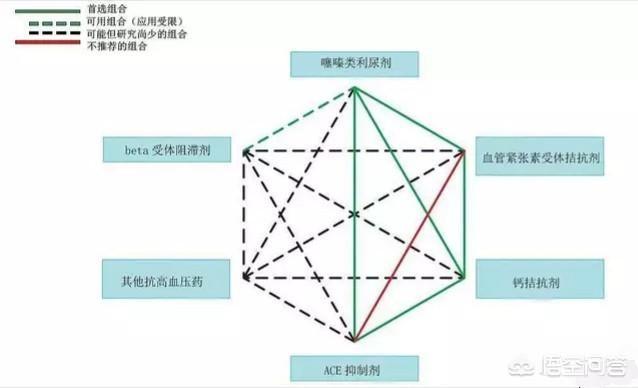
1, we need to choose different antihypertensive drugs according to each one's blood pressure and co-morbidities;
2. Moreover, antihypertensive drugs have certain side effects, and it is also necessary to observe whether there are any serious side effects, and if there are, then it is still necessary to change antihypertensive drugs.
3, a lot of clinical hypertension is not a kind of antihypertensive drugs can be reduced to normal, so there is a joint antihypertensive problem.
So we don't have a direct answer as to what antihypertensive medication a hypertensive person should take.
To give a general framework.
1、Simple hypertension:you can choose diphenhydramine or prilosec or sartan;
In simple refractory hypertension, in addition to diphenhydramine in combination with sartan or prilosec, it is also combined with bethanechol, diuretics, and so on.
2, Combined diabetes, to choose sartan;
3、Combined with fast heart rate, go for betalactam;
4. Combined heart failure with prilosec/sartan, bethanechol, diuretics;
5, Combined angina, to use betalactam or sartan, prilosec;
6. In combination with renal disease, use sartan;
7. Combined with myocardial infarction to use Prilosec or sartan, betalactam;
Common Antihypertensive Drug Side Effects.
Dipterocarpine:Redness of the face and eyes, palpitations, swelling of the lower limbs, swollen gums;
Prilosec:Dry cough, elevated blood potassium;
Diuretics:Electrolyte disorders, hyperuricemia;
Sartan:Elevated blood potassium;
Betalucil:Slowed heart rate, ED in men, etc.
In short, high blood pressure must take regular antihypertensive drugs, rather than just listen to small advertisements and delay the condition.
The principle of choosing antihypertensive drugs is: long-lasting and smooth protection of target organs!
(Dr. Cardiovascular Wang officially authorized original protection, such as theft must be held legally responsible.)
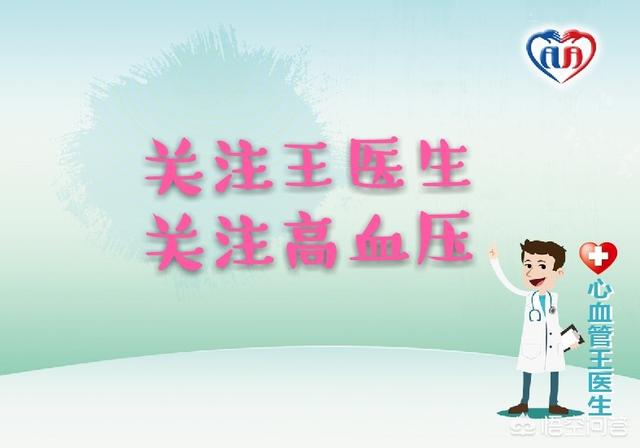
It is considered good for people with high blood pressure to take medicine that controls their blood pressure to normal.
So how to choose specific drugs for hypertension so many drugs? We need to understand the antihypertensive mechanism of various antihypertensive drugs according to the characteristics of antihypertensive drugs, and rationally choose the better antihypertensive program for the individual.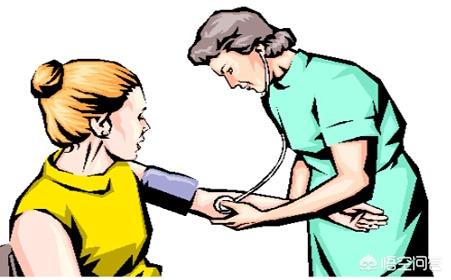
Hypertension medications are divided into five main categories including: diuretics, beta-blockers, angiotensin-converting enzyme inhibitors, calcium channel blockers, and angiotensin II receptor blockers.
In addition to diuretics enhancing the efficacy of other antihypertensive drugs, it is currently the main drug used to control heart failure. It is contraindicated in patients with gout.
In addition to lowering blood pressure with better results, beta blockers can control the ventricular rate and reduce myocardial oxygen consumption. It is contraindicated in patients with bronchial asthma, metaplastic sinus node syndrome, atrioventricular block, and heart failure cardiac function class IV.
Angiotensin-converting enzyme inhibitors are currently used as first-line antihypertensive drugs, in addition to better stabilization of antihypertensive effect, and improve the role of ventricular remodeling. It is especially suitable for patients with heart failure. Renal artery stenosis, hyperkalemia patients are prohibited.
Angiotensin II receptor blockers act similarly to angiotensin-converting enzyme inhibitors, but with fewer side effects.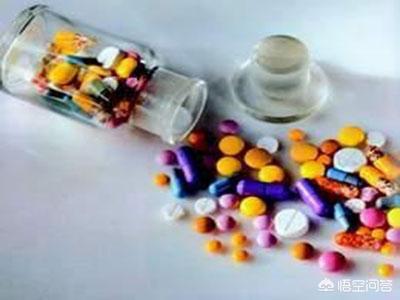
As can be seen from the above types of antihypertensive drugs, theThe choice of hypertension drugs should not only pay attention to the control of blood pressure, but also take into account the side effects of antihypertensive drugs and patients with target organ damage to choose some drugs that are beneficial to the target organ or avoid harming the target organ.
The prerequisite for choosing any medicine is to be in control of normal blood pressure.
Antihypertensive drugs can be broadly categorized into six main groups: diuretics, calcium channel antagonists (diphenhydramine, etc.), angiotensin-converting enzyme inhibitors (priligy), angiotensin receptor blockers (sartans), alpha-blockers (zolazines), and beta-blockers (lozenges).
Hypertension is subdivided into primary hypertension and secondary hypertension. Secondary hypertension is caused by other diseases and curing the primary disease can cure hypertension, while primary hypertension can only be controlled but not cured. Therefore.When high blood pressure is detected, you should go to the hospital for checkups before taking medication and use it under the guidance of your doctor.
Due to the many types of antihypertensive drugs, different antihypertensive drugs have different principles of action, taking antihypertensive drugs have individual differences, different antihypertensive drugs have different adverse reactions in different individuals, for example, Prilosec will cause coughing, but not everyone will cause coughing, and some people will not. When you have an adverse reaction to an antihypertensive drug, you should tell your doctor to switch to another antihypertensive drug.
In general, antihypertensive drugs are related to price; expensive drugs generally have a longer half-life (i.e., fewer daily doses) and fewer adverse effects, while the opposite is true for cheaper drugs. When choosing a therapeutic drug, it is important to consider the efficacy, price, adverse effects, and convenience. No matter how good the medicine is, it is useless if you can't afford to take it. Cheap drugs, although the adverse effects of some of the larger, more often every day to eat, but can afford to eat in order to adhere to the treatment, better than not eat. Cheap drugs are often some old drugs, tried and tested, doctors are familiar with their characteristics, adverse reactions, the poor do not have to worry about can not afford to eat expensive drugs. Of course, the rich can eat more expensive similar drugs, such as commonly used calcium channel antagonists - the cheapest nifedipine, the efficacy of the drug even half a day less than the blood pressure fluctuations, to eat three times a day, nifedipine extended-release tablets, eat twice a day can be, nifedipine controlled-release tablets need to eat only once a day, of course, the price will undoubtedly be much more expensive. The long half-life of amlodipine is more expensive, and the effect of the drug is smoother.
Hypertensive patients have to choose a suitable antihypertensive drug, accompanied by a lifetime of eating, due to the antihypertensive drugs have adverse effects, taking drugs, regular follow-up.[33]
Regarding the choice of medication for hypertension, it needs to be based on the principle of individualization. In other words, different drugs are suitable for different hypertensive patients. Below, a few basic principles of drug selection are described for the questioner's reference.
1. Choose antihypertensive drugs according to comorbidities. Many hypertensive patients combine some other organ problems, such as combining with cerebral infarction, coronary heart disease, heart failure, diabetes and so on.
In the case of comorbid diabetes, angiotensin-converting enzyme inhibitors, or angiotensin receptor antagonists, also known as prilosec and sartans, should be preferred.
In case of comorbid coronary artery disease or heart failure, angiotensin-converting enzyme inhibitors and beta-blockers should be preferred, the latter being represented by metoprolol and bisoprolol, among others.
If hypertension is combined with cerebral infarction, calcium channel antagonists such as amlodipine are suitable.
2. Selection of drugs according to age. Different age is suitable for different antihypertensive drugs, for example, the elderly prefer diuretics or calcium channel antagonists, while young and middle-aged people suffering from hypertension choose beta-blockers or angiotensin-converting enzyme inhibitors and so on.
3. Choose medication according to blood pressure fluctuations. The selection of antihypertensive drugs needs to be based on the fluctuation of blood pressure to choose the best time to take the medication. For example, most people's blood pressure is lower at night than during the day, so antihypertensive drugs are usually taken in the morning, but some people's blood pressure is higher at night than during the day, so antihypertensive drugs may be taken in the afternoon.
In conclusion, the selection of antihypertensive drugs requires the principle of individualization and cannot be made in a one-size-fits-all manner.
The drugs preferred are different for different ages and different underlying diseases. Young and middle-aged hypertensive patients, suitable for the first choice of drugs acting on the RAAS system (renin, angiotensin _ aldosterone system), such as ACEI (renin angiotensin aldosterone system inhibitors) class of drugs or ARB (angiotensin 2 receptor antagonist) class of drugs, if the heart rate is fast, but also the choice of β-receptor blockers, such as bethanechol, bisoprolol and so on, most of the older people exist atherosclerosis, blood vessel hardening, poor elasticity, low compliance, resulting in high systolic blood pressure, diastolic blood pressure is relatively insignificantly higher, the pulse pressure difference becomes larger, and the pulse pressure difference becomes larger. Most of the elderly people have atherosclerosis, the blood vessels become hard, poor elasticity, low compliance, resulting in high systolic blood pressure, diastolic blood pressure is not obvious, the pulse pressure difference becomes large, suitable for the first choice of calcium antagonists such as amlodipine, felodipine, etc., not only can effectively lower the blood pressure, especially systolic blood pressure, but also improve the formation of atherosclerotic plaques, control the progress of plaques and so on.
Different underlying diseases, the choice of antihypertensive drugs is also different, not only to have a clear antihypertensive effect, but also to take into account the impact of the primary underlying diseases, such as diabetes combined with hypertension, antihypertensive drugs should be preferred to ACEI or ARB, not only has a good effect on lowering blood pressure, but also a specific renal protective effect, which can improve the micro-proteinuria, in addition, chloretzane, valsartan, timosartan and irbesartan, etc., but also has a pancreas Protective effect, can increase insulin sensitivity, improve glucose metabolism effect, β blockers, as well as diuretics due to the adverse effects on glucose lipid metabolism, can be used as a second-line drug, or used in combination with ARB drugs, should be used as much as possible to minimize the effective amount. Calcium antagonists are a second choice option and should be chosen as long-acting agents.
Hypertension combined with hyperlipidemia
These patients are susceptible to atherosclerosis, and calcium antagonists such as amlodipine, which has a half-life of 35-52 hours and more evidence-based medical evidence of antihypertensive effects and anti-atherosclerosis, and perindopril, which has evidence of specific reduction in all-cause mortality, are preferred, and olmesartan, which has evidence of anti-atherosclerotic effects, are also preferred. prioritized varieties. Diuretics and beta-blockers should be used in small doses due to their adverse effects on lipid metabolism.
Hypertension combined with coronary heart disease
For stable angina, antihypertensive drugs should be preferred to beta-blockers or calcium antagonists, which improve myocardial ischemia and inhibit ventricular remodeling by inhibiting sympathetic activity and dilating coronary arteries. For post-infarction and heart failure patients, the use of calcium antagonists is generally not recommended, and the long-acting agents amlodipine and felodipine are optional varieties.
In conclusion, the principles of treatment of hypertension should follow a strategy of starting with small doses, selecting long-acting agents, individualizing treatment, and combining treatments, and cost/benefit considerations need to be taken into account.
bibliography
Chinese Expert Consensus on Comprehensive Management of Blood Pressure and Lipids in Hypertensive Patients 2019
2012 Expert Guidance on Blood Pressure Control in Patients with Hypertension Combined with Type 2 Diabetes Mellitus
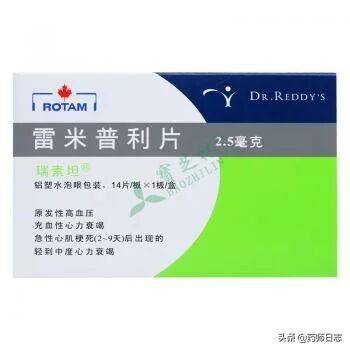
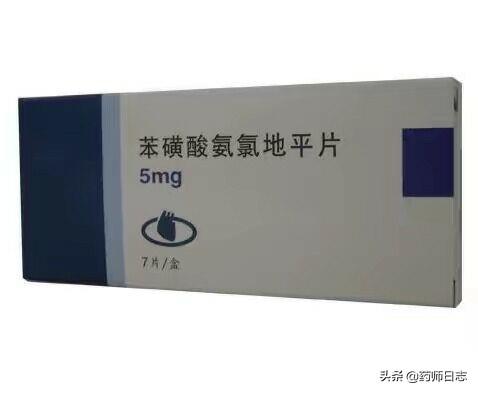
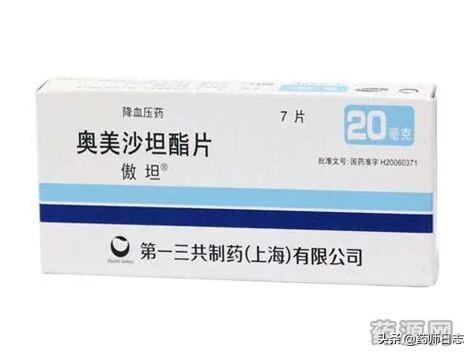
This question and answer are from the site users, does not represent the position of the site, such as infringement, please contact the administrator to delete.
